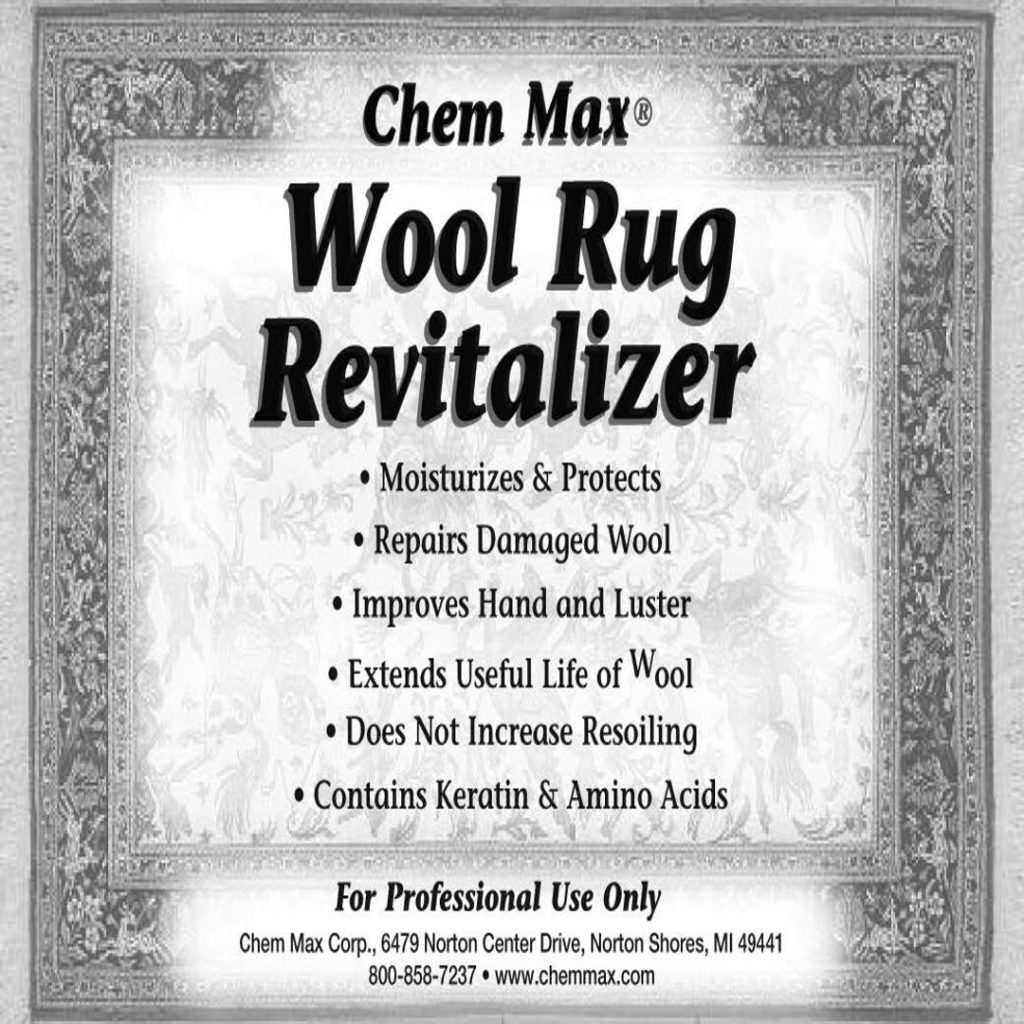WOOL RUG REVITALIZER – BUY NOW >>

We had requests for a product to revitalize old, dried-out antique wool rugs.
We looked everywhere for something to help those old dried-out wool rugs. The only thing we
could find was lanolin, which is wool grease from sheep, so it contains the lipids needed to
“moisturize” the dried-out wool. Lanolin is a great product for moisturizing dry skin. It gives
your skin the lipids it needs to heal itself. But it is not good for wool and silk rugs. Why not?
With your skin, you wash and take a bath often (hopefully), thus removing the lanolin. With
rugs, you end up, leaving the lanolin on the rug. Lanolin is greasy product that causes the rug
to get dirty much faster, that is not all, as lanolin is a natural lipid, microorganisms recognize it
as a food source. They eat the lanolin and off-gas MVOC’s (microbial volatile organic
compounds). After applying lanolin to the rug, given a little time to grow in population, the
MVOC’s will make the rug smell like something died. The entire room can get a strong
unpleasant musty odor. So, as you can see and smell, lanolin is an unwise choice. So we had
to come up with something better; Wool Rug Revitalizer. Its lipids are synthetic so that micro
organisms will not eat it. It does not smell bad. Wool rug Revitalizer will not make the rug resoil
faster.
Wool Rug Revitalizer not only moisturizes and protects old, dried-out wool, but also improves
the hand and luster of the rug. With antique rugs, a Wool Rug Revitalizer treatment can
greatly increase the value of the rug. A rug dealer may find that a rug that would not sell in
the past will sell now.
Wool Rug Revitalizer actually repairs wool fibers. So rugs that have been abused by high pH,
high heat, low humidity, strong chemicals, urine contamination, strip washing, and smoke/fire
damage can be revitalized with Wool Rug Revitalizer. Even newer rugs may be exposed to
these types of damage.
Each time that you inspect a rug for cleaning or repair, consider if the wool itself needs repair.
Is it stiff and dried-out? Are the warp and weft fibers (wool or silk yarns only) breaking or
cracking when squeezed and twisted? (You need to use your ears for this test)! Does the wool
feel dead where it has been contaminated with chemicals, urine or other residue? Is the rug
old and has seen better days? Was the rug cleaned with a high pH detergent in the past? Has
cyclodextrin been repeatedly applied to deodorize the rug by the rug owner? Has the rug
come from a smoke or fire job? Every rug that has been exposed to high heat and smoke
damage should be treated with Wool Rug Revitalizer. Wool Rug Revitalizer can help in all of
these situations.
Point out theses conditions to your customer and explain how you can treat these problems
and extend the useful life of their rugs. Explain how it can improve the value of their wool or
Page 1 of 2
silk rug. A small investment in your treatment to repair and revitalize their rug can payoff in
increased value and extended life.
Most charge $1.00 to $2.00 per square foot for a Wool Rug Revitalizer treatment
A 9’ x 12’ rug should cost from $108.00 to $216.00. Your cost should be from $15.00 to
$30.00 in most cases, about 14¢ to 28¢ per square foot plus your labor.
Application is simple and easy. Dust and clean rug first, apply Wool Rug Revitalizer to a horse
hair applicator brush sparingly, then brush into the face fibers of the rug. Do NOT saturate
rug.
For wool damaged by high pH cleaners, dye stripping, urine or other contamination, apply
directly to damaged fibers sparingly, then use a horse hair brush to work into the rest of the
rug as above.
For severely dried-out, antique rugs, or rugs that are smoke damaged, spray apply to front
and back of rug. Do Not saturate rug. Allow dwell time of one hour or more, (overnight is
best) then wash rug.
As you can see, Wool Rug Revitalizer is a great product to have on hand to help out those old
antique rugs and those rugs that have been abused. This treatment can be profitable and be
a “lifesaver” for wool and silk rugs and other textiles like upholstery or wool trappings. Your
clients and their rugs will love you for making them better.
Sources:
Textiles in Perspective by Betty F. Smith and Ira Block
Wool it’s Chemistry and Physics by Peter Alexander and Robert Hudson
Textiles, Fibers, Dyes, Finishes and Processes a Concise Guide by Howard L. Needles
The Coloration of Wool and Other keratin Fibers by David M. Lewis and John A. Rippon
